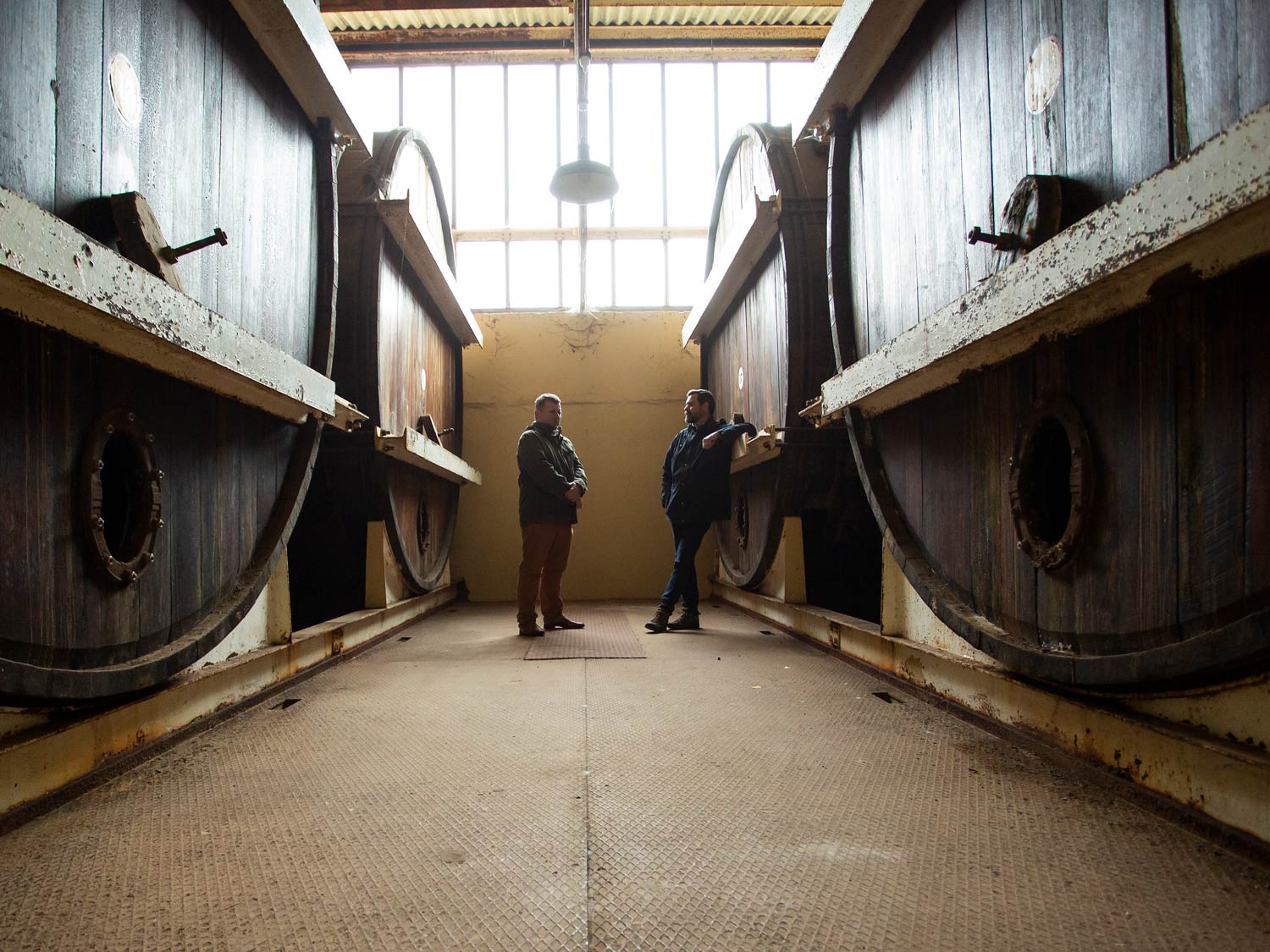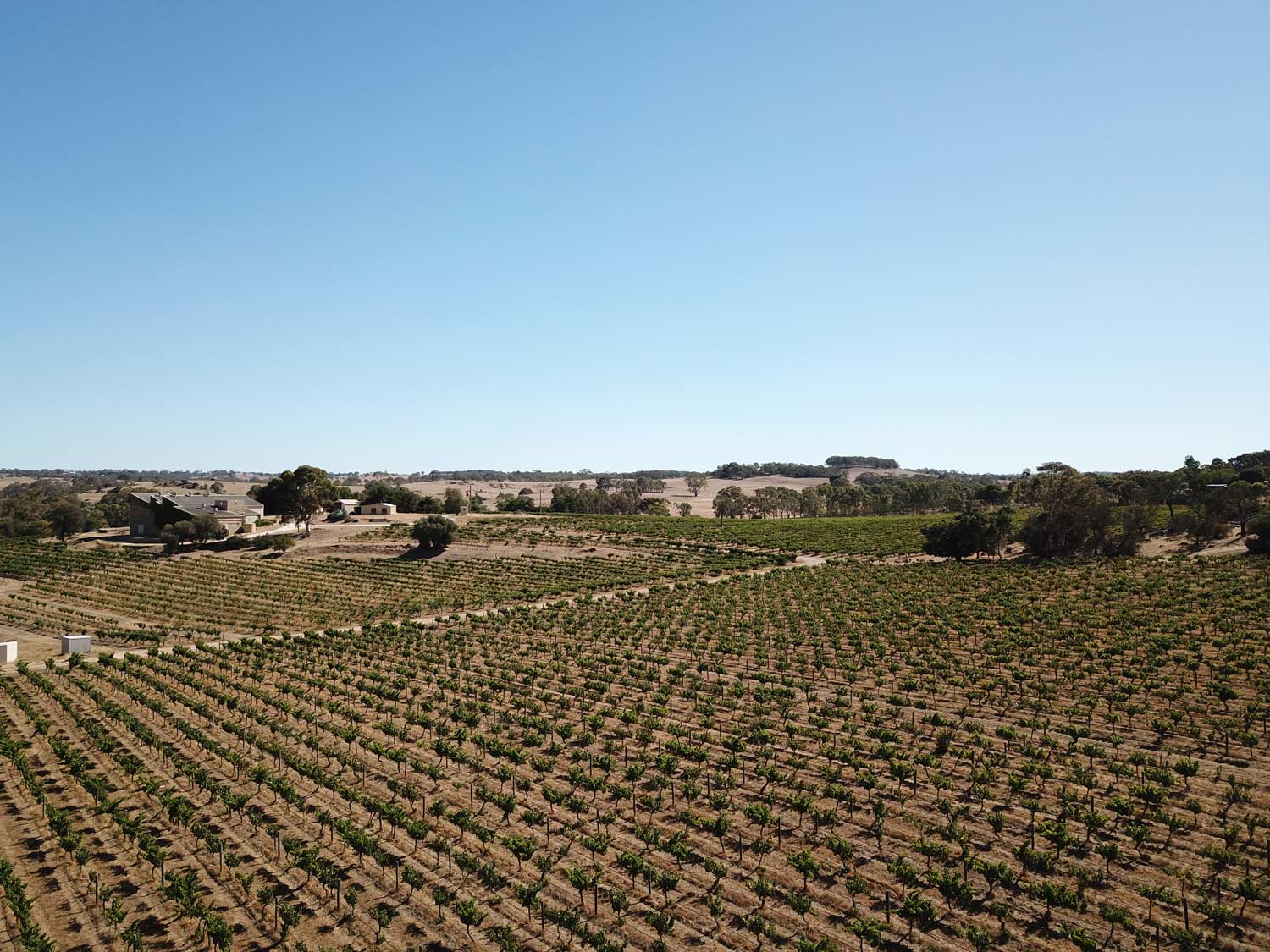Located in the Eden Valley’s southeastern corner, a stone’s throw from Springton, Stonegarden Vineyard is a historic gem first planted from 1858. Under Glen Monaghan’s stewardship since 2015, this 20-hectare vineyard nurtures a diverse array of varieties including grenache, shiraz, cabernet sauvignon, riesling, muscat, mataro, and more, without herbicides, embodying a minimalist viticulture ethos. Stonegarden’s vines, over 165 years old, contribute to an impressive roll call of wines. Labels such as Stonegarden Wines, Chateau Tanunda, John Duval, Kellermeister, Head Wines, Eperosa, and Brothers At War showcase the vineyard’s grenache, with prices ranging from $65 to $500, underscoring the exceptional quality derived from this historic site.
Monaghan helps describe the terroir, “Stonegarden, as a place, is unique. It sits in a rain shadow that typically misses out on moisture that drops elsewhere in Eden Valley. Cool nights help the ripening fruit preserve acid which is reflected in the wines. The thin loam soils lying over a substrate of reddish brown clay contain stones of micaceous schist and gold bearing quartz. Either by the lack of rainfall, low nutrient soils, or clonal selection, the vines produce berries with smaller size and thick skins. The wines produced from this special piece of history are something to behold. Shiraz, cabernet sauvignon, grenache and riesling, while singing their respective varietal character, have a common vineyard thread of beautiful aromatics and supple minerality.”
As Stonegarden looks to the future, it does so with an eye towards continuous improvement and adaptation. There’s plans for ‘layering’ the old vines to fill in gaps where vines have died, and desire to discover the varieties and clones within through DNA testing.
The site is somewhat of a living museum. “The vineyard contains clones and examples of varieties that may be found nowhere else on earth. Through DNA testing we found examples of varieties such as canacazo and trincadiera which don’t appear to have been grown anywhere else in this region or throughout Australia,” says Monaghan. But there’s still further secrets to unravel about the vines. The mapping has been limited to only a small ‘mixed muscat’ block in 2021. “Each block contains examples of rogue varieties, either planted unknowingly or in some cases possibly deliberately. It would be wonderful to identify all of the vine types on the property and in particular the origin of clones that exist.”
The history of Stonegarden is multifaceted. It’s a vineyard that has traversed various phases over its 165-year legacy. Its fruit was predominantly utilized for crafting dry table wines, but during the 1870’s the fruit was sold to Seppeltsfield presumably for making fortifieds. Later, in the early part of the 20th Century, the vineyard produced brandy spirit. From the 1930s onwards, Stonegarden has been instrumental in yielding a diverse range of dry and sweet table wines, contributing to labels such as Hamilton’s Ewell Wines and Treasury Wines, among others.
Monaghan draws on a community of viticulturists to make informed decisions about site management, “Stonegarden is fortunate to have the resources of some of our industry’s finest viticulturists, including Dr Dylan Grigg, Mandy Mader, Brett Grocke, and Dean Willoughby. With so many modern viticultural processes available, the consensus is to approach this vineyard in a similar way to how the original vineyard was managed – using organic principles, and careful attention to pruning methods.”
“When we became custodians of Stonegarden in 2015 we found that the whole vineyard was either single cordon spur pruned or in the case of riesling, multiple cordons (as many as seven wrapped around a single trellis wire). With the exception of grenache, we set about progressively converting the vines to single wire rod and spur pruning. We found that by adopting this type of pruning, and limiting bud numbers, we could increase the length and vigour of fruitful canes which subsequently produced more even bunches of better tasting grapes. Undervine was previously managed by spraying glyphosate in early winter and sheep were used to eat mid row grasses and weeds up until budburst. Our first step was to stop the use of herbicide spraying undervine and instead utilising undervine knifing to mechanically cut weeds off. We then stopped using sheep to manage midrows and instead encouraged the native grasses and herbs to grow to a larger size before rolling them, and subsequently mowing to reduce fuel load in the fire danger season. From 2016 on, we have gradually seen healthier cane length and vine consistency, coupled with a greater diversity of plant species, including native clover which weren’t previously seen. We have also been trailing undervine mulch application using organic compost and straw, with promising results.”
“Since managing Stonegarden, we have ceased sheep grazing and cultivation in the sections adjacent to the creek, thereby encouraging the growth of native vegetation such as redgum and ironbark saplings. We have also planted a Truffiere of English and French oaks (inoculated with black truffle spores) which also acts as a fire retardant. In time we plan to add some areas of native beneficial plants, to increase biodiversity and predatory insects.”
Monaghan describes what he loves most about being a custodian of this place. “No one in their right mind would plant a vineyard at Stonegarden today. Relatively isolated from the rest of Barossa, soil lacking in nutrients and depth, poor rainfall and incessant threats of weather. Each year however, around the time of picking, we get to taste this amazing fruit with all the nuance of aroma, palate, colour and skin tannin. We get to see the delicious berries transform into complex, unctuous wines and at that point we are grateful someone took the time to plant some sticks in our paddocks 166 years ago.”




